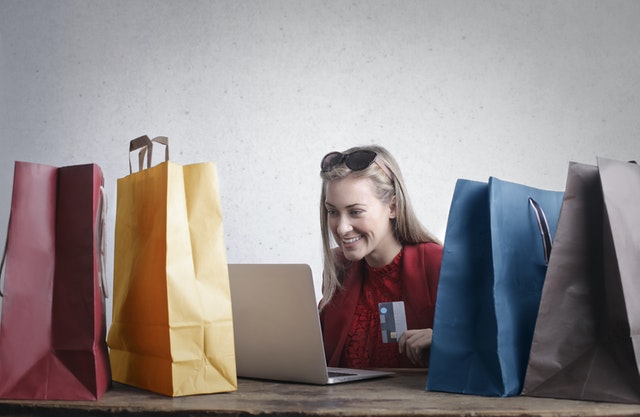Upsell and cross-sell are two similar but different e-commerce techniques your company can use to increase revenue. When you make upsell and cross-sell recommendations to customers, you could see an increase in Average Order Value (AOV). Learn more about these two merchandising techniques and how to put them to work for you.
What is Upsell?
When you ask customers to buy a better, upgraded, or premium version of the item they want to purchase, you’re using the sales technique of upselling. Upsell is successful when you understand your customers’ needs and make the customer feel like they’ve won as they spend more money in your store. Your customers appreciate your efforts to make their shopping experience more valuable and enjoyable, and you could increase your sales.
Examples of a successful upsell include:
- Offer coach passengers the opportunity to upgrade to first-class.
- Ask diners if they want to order an appetizer.
- Give a discount on the audio version of an e-book in a customer’s cart.
- Recommend a premium trim package to a new car buyer.
- Suggest a premium version of the free online tool or resource.
What is Cross-Sell?
Offer customers a product or service that’s related or complementary to what they’re already buying, and you implement the sales technique of cross-sell. Customers appreciate the suggestions that increase the value of their purchase, and you showcase the breadth of your catalog as you potentially generate more sales.
Examples of cross-sell include:
- Recommend paper with an ink cartridge purchase.
- Suggest “Complete the Look” items, such as shoes and a jacket, to customers who purchase a shirt.
- Offer a memory card and HDMI cable bundle to customers who buy a digital camera.
- Showcase a phone case that’s popular with customers who bought the same phone.
- Detail items that are frequently bought together, such as socks and shoes or coffee and a mug.
Why it’s Important to Upsell and Cross-Sell?
Your customers appreciate relevant and affordable upsell and cross-sell product recommendations that add value to their lives, and satisfied customers buy more of the products you sell. Here are why these two sales techniques are important.
1. Strengthen relationships with customers.
Your customers “win” when the products you upsell or cross-sell boost the value of their purchase, give them a better deal and improve their lives. Happy customers are more likely to become loyal customers who return to your website and refer your company to friends.
2. Reduce lead generation costs and efforts.
Lead generation costs an average of $200, according to The Washington Note. Your company will save money, time and effort when you nurture existing customers who are familiar with your brand. Rather than invest in lead generation, promote relevant products to current shoppers via upselling and cross-selling.
3. Increase Customer Lifetime Value (CLV).
Customers tend to spend more money over time when you utilize upsell and cross-sell. Through online retail merchandising, you can increase CLV automatically without spending extra money.
Ways to Make Upsell and Cross-Sell Recommendations.
Automatic upsell and cross-sell recommendations reach your online shoppers with targeted products as they shop. This personalization is achieved through smart artificial intelligence (AI) and machine learning. With machine learning AI, you can use customers’ shopping behavior to increase your sales, and AI-based capability requires no manual work on your end. Here a few ways Smart AI works.
1. Identify customer characteristics as they shop.
As shoppers browse your online shop or prepare to check out, they receive product suggestions that match the product types, patterns, styles, and colors they like. This personalization is based on both textual and visual catalog information.
2.Utilize Big Data.
Big data is a smart AI tool that compiles historical and real-time information. It can recommend products based on what your customers typically view and purchase. Data-driven product recommendations also automatically adapt to fit individual shoppers so that your customers see the best products at the best time.
3.Use “wisdom of the crowds.”
In addition to personalized recommendations based on individual shopper behavior, AI and machine learning suggest products that are popular with a majority of your shoppers.
4.Suggest similar styles.
Use smart AI to suggest products in styles that relate to a customer’s current shopping session. Customers may see similar styles of clothing, food or home decor that match their interests, needs and wants.
5.Offer to Complete the Look.
The “Complete the Look” option shows customers the items that match the items they’ve searched for or have in their carts. Videos, photos and images demonstrate how the products look and function in real life, and these visual merchandising prompts encourage customers to buy the whole package instead of a single item. For example, a customer that’s interested in a sweater may see a recommendation for matching jeans and accessories. With this technique, you match the way your shoppers perform mobile searches and help customers find other products that are available in your store.
Upsell and cross-sell create satisfied customers and additional revenue for your company. Implement these two merchandising techniques today, and see why and how they work for you.






